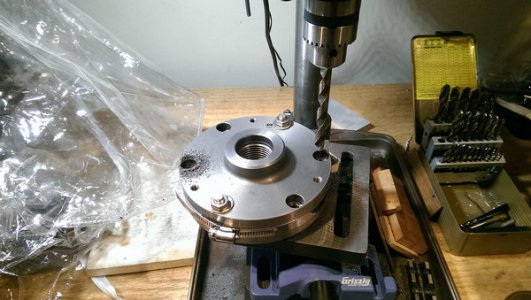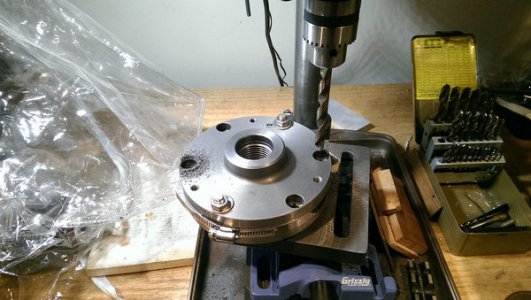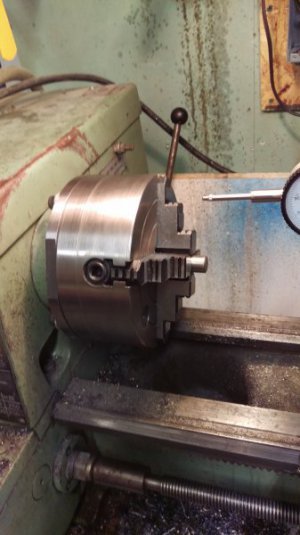- Joined
- Mar 25, 2013
- Messages
- 5,131
What are the 3 holes you already have drilled? I think the holes in the chuck could be through holes if you take the chuck apart? Would that be easier and more precise? I'm gonna assume you don't have a rotary table? Another idea if you know (or can measure) the bolt hole circle diameter is to machine a very shallow groove in the back plate that you have measured out from center on the lathe. Center punch your holes in that groove. Then you know that the radius is dead on.
I personally would take the chuck apart and use the housing with transfer punches to mark the holes. You could even use the chuck as a drill guide but be careful not to mess it up.
Here's one way I did it using an old back plate as a drill guide for a new one.

Robert
I personally would take the chuck apart and use the housing with transfer punches to mark the holes. You could even use the chuck as a drill guide but be careful not to mess it up.
Here's one way I did it using an old back plate as a drill guide for a new one.

Robert
Last edited:


